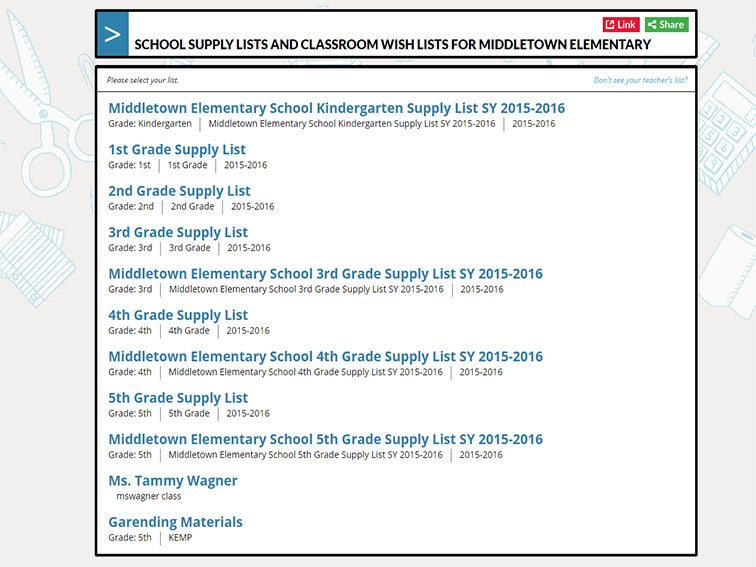 Teacher Wish Lists: Because School Supply Shopping Goes Year-Round
Teacher Wish Lists: Because School Supply Shopping Goes Year-Round
by Tim Sullivan, TeacherLists.com
The New York Times recently published a story about back-to-school spending in 2015 with a simple irony at its core: While parents are spending less overall on the necessary supplies, back-to-school lists sent home every year keep getting longer.
Items on a basic back-to-school list don’t change that much each year, so why are school supply lists getting longer? What millions of parents are seeing is the addition of items used by the entire classroom. While pencils, paper and a good old-fashioned calculator are still common back-to-school hallmarks, increasingly these lists are populated with paper towels, tissues, hand sanitizer and art supplies, as well as requests for extra pencils, pens, markers and crayons so that students lacking these items still can participate in classroom activities.
It’s not just parents feeling the burden. A study published last year showed that teachers are spending an average of $400 out-of-pocket on extra supplies as well. Many teachers are parents themselves, meaning they can end up footing a $400 bill for their classrooms in addition to the estimated $600 a typical family spends on school supplies, backpacks and clothing.
The good news is that the beneficiaries of longer school supply lists are always children. In some cases, particularly in large metropolitan areas, those supplies are used by students who are homeless or living in extreme poverty to give them the same quality of education their classmates receive. Parents grumble when asked to provide extra pencils and sanitary wipes every year, but most understand it’s because increasing student needs run simultaneously with decreased classroom funding. It’s a shared burden, but it still begs the question:
What’s the solution? The Times piece stops short of providing one, and with good reason. Any school funding discussion inevitably becomes political, and unfortunately, there are very few in the education industry creating solutions and contingency plans in the face of limited resources.
The need for a contingency plan is what inspired us to develop the Wish Lists function at TeacherLists. Though we already host over 1,000,000 school supply lists, which can be updated, sent and accessed anytime online, we’re very much in touch with what both teachers and parents go through during the back-to-school season. Instead of asking for a major investment up front, we’re helping both teachers and parents pace themselves.
Wish Lists are free to use, and allow teachers to organize those extra supply requests into a separate list that can be updated anytime year-round. If a classroom is running low on art supplies or sanitary items in, say, November, teachers create a Wish List that sends an email to parents asking them to pitch in instead of just sticking them with a one-time burden (and bill) every August.
It’s important to remember that as parents, educators or both, we are in the business of putting students first. To use a sports analogy, “we’re all on the same team.” How can you help ensure that every student receives the same educational opportunities despite the challenges in our industry? How can you help a teammate today? Pick up a box of tissues when you get a Wish List request in November instead of buying 10 in late August. That isn’t just a start — it’s a solution.
Tim Sullivan is the founder and president of TeacherLists– the first and only digital platform modernizing the school supply list process for all schools, all teachers and all parents. Completely free-of-charge for schools, the TeacherLists platform ends the days of mailing paper lists, endless and ineffective photocopies in plastic bins in store aisles and never-ending phone calls to the school office about lost lists; Teacher Wish Lists: Because School Supply Shopping Goes Year-Round
